What Is Subterranean Clover : How To Grow Subterranean Clover Cover Crops
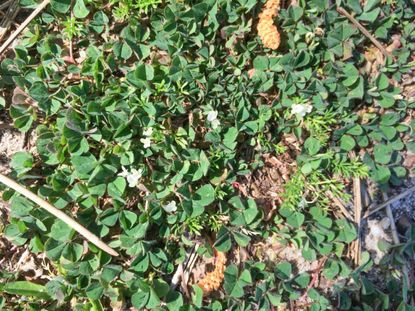

Soil building crops are nothing new. Cover crops and green manure are common in large and small gardens. Subterranean clover plants are legumes and, as such, have the capacity to fix nitrogen in soil. Nitrogen availability is crucial for much of a plant's growth. Subterranean clover (Trifolium subterraneum) is a plant that spreads through underground stolons, or specialized stems, which fix nitrogen. The plant is useful in many different cropping applications.
What is Subterranean Clover?
Subterranean clover uses span many areas from soil improvement to beneficial insect habit. There are several species that thrive in Mediterranean environments, most of which thrive if planted in late summer to early fall. Plants go dormant in winter but come back into full leaf and bloom in spring. The name for the clover actually comes from its reproduction process, not its spread through stolon. In spring, the seeds mature in a bur that is just below the soil surface. The plant is an annual legume but will readily reseed itself. This makes it an easy plant for use as a weed suppressor, erosion control, soil conditioner, animal fodder, and natural mulch or ground cover. In most cases, the plant will come back annually, just from the seed of the previous season, especially if old growth is mowed down or grazed. Subterranean clover plants can be difficult to manage if you wish to kill the stand. Organic control is primarily through mowing, hand pulling and deep tillage at mid-bloom.
Subterranean Clover Uses
Adding nitrogen to soil is one of the primary subterranean clover uses. As a soil conditioner, it not only adds nitrogen but loosens soil and provides a cover crop that will compost into soil as a green manure. The plant's broad network of stolons act as a weed suppressor by choking out the roots of competitive species and smothering the emerging seedlings. The plant is a useful forage for range animals, especially when planted with ryegrass or fescue. The plant is high in protein and later adds nutrients in a close cropped situation. The clover is also of benefit in soil conservation and erosion control. The dense mat of vegetation efficiently grabs soil and holds it in place. Another of the uses for sub-clover is as cover for beneficial insects as well as suppression of pest insect egg laying. Studies show the plant can reduce thrips and caterpillar populations, especially in Brassicas and Allium.
How to Grow Subterranean Clover
Subterranean clover requires slightly acidic soil, and a warm, wet winter and dry summer. The plants need about 15 inches (38 cm.) of rainfall. The seed for this clover is surface sown or just under a thin film of soil. After that, the plants just take off. Clover is one of the easier plants to grow, with vigorous shooting and spread. In most areas, plants stop production of leaves and stolon in late spring to early summer. The biomass remaining can be worked into soil, mowed or burned. The removal of the old plants is important to the re-establishment of seeds the next season. One caveat regarding the plants and animals is that the clover can have high levels of oestrogen which can affect the fertility of females. It does not affect cows or goats but in areas with sheep, its use should be limited.
Gardening tips, videos, info and more delivered right to your inbox!
Sign up for the Gardening Know How newsletter today and receive a free download of our most popular eBook "How to Grow Delicious Tomatoes."

Bonnie Grant is a professional landscaper with a Certification in Urban Gardening. She has been gardening and writing for 15 years. A former professional chef, she has a passion for edible landscaping.
-
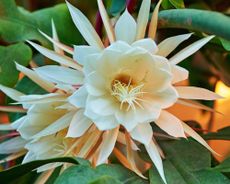 5 Night-Blooming Houseplants – Grow An Indoor Moon Garden
5 Night-Blooming Houseplants – Grow An Indoor Moon GardenThere is something uniquely special about night-blooming houseplants. Set the scene for a magical evening indoors with these fragrant flowering beauties.
By Amy Grant
-
 Beautiful Butterfly Garden Ideas: 10 Ways To Attract Pretty Pollinators To Your Yard
Beautiful Butterfly Garden Ideas: 10 Ways To Attract Pretty Pollinators To Your YardBringing butterflies to your backyard is one of the most important ways you can enhance wildlife, boost pollination and improve biodiversity. These 10 butterfly garden ideas can get you started
By Mary Ellen Ellis
-
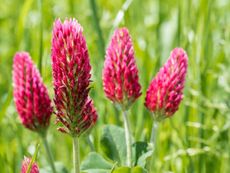 Best Late Summer And Early Fall Cover Crops
Best Late Summer And Early Fall Cover CropsPlanting cover crops is a gift you can give to your garden’s soil. Read on to learn about planting cover crops in late summer.
By Bonnie L. Grant
-
 Sunn Hemp Plant Info – Learn Sunn Hemp Uses And Care
Sunn Hemp Plant Info – Learn Sunn Hemp Uses And CareSunn hemp grass is a warm weather grass. Click to learn more about Sunn hemp uses as well as helpful tips on growing Sunn hemp as a cover crop.
By Mary H. Dyer
-
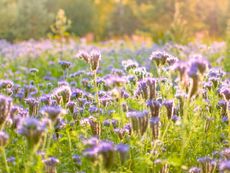 Native Cover Crops: Vegetable Cover Cropping With Native Plants
Native Cover Crops: Vegetable Cover Cropping With Native PlantsAre there any benefits to using native plants as cover crops? Click here to learn more about vegetable cover cropping with native plants.
By Laura Miller
-
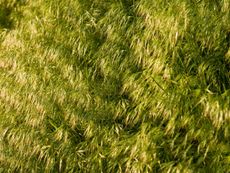 What Is Field Brome – Information About Field Brome Grass
What Is Field Brome – Information About Field Brome GrassField brome grass can be used as a cover crop to control erosion and enrich the soil. For more information, click the following article.
By Laura Miller
-
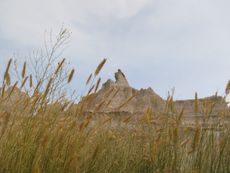 What Is Western Wheatgrass – How To Grow Western Wheatgrass
What Is Western Wheatgrass – How To Grow Western WheatgrassWheatgrass is native to North America and graces the Southwest, Great Plains and mountainous regions of the western U.S. It has some erosion control benefits but using western wheatgrass for grazing is the primary purpose. Learn more about it here.
By Bonnie L. Grant
-
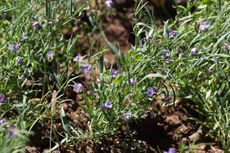 What Is Chickling Vetch – Growing Chickling Vetch For Nitrogen Fixing
What Is Chickling Vetch – Growing Chickling Vetch For Nitrogen FixingWhat is chickling vetch? Also known by various names such as grass pea, white vetch, blue sweet pea, Indian vetch, or Indian pea, chickling vetch is a nutritious legume grown to feed livestock and humans in countries around the world. Learn more about the plant here.
By Mary H. Dyer
-
Establishing Kura Clover: Learn How To Grow Kura Clover Plants
You no doubt have heard about the four-leaf clover, but few gardeners are familiar with kura clover plants. Kura is a forage legume and if you are interested in growing kura as a groundcover or establishing kura clover for some other use, this article will help.
By Teo Spengler
-
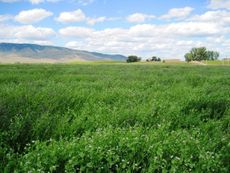 What Are Austrian Winter Peas: A Guide To Growing Austrian Winter Peas
What Are Austrian Winter Peas: A Guide To Growing Austrian Winter PeasWhat are Austrian winter peas? Also known as field peas, Austrian winter peas have been grown around the world for centuries, primarily as a valuable source of nutrition for humans and livestock. Click this article for info on growing Austrian winter peas.
By Mary H. Dyer